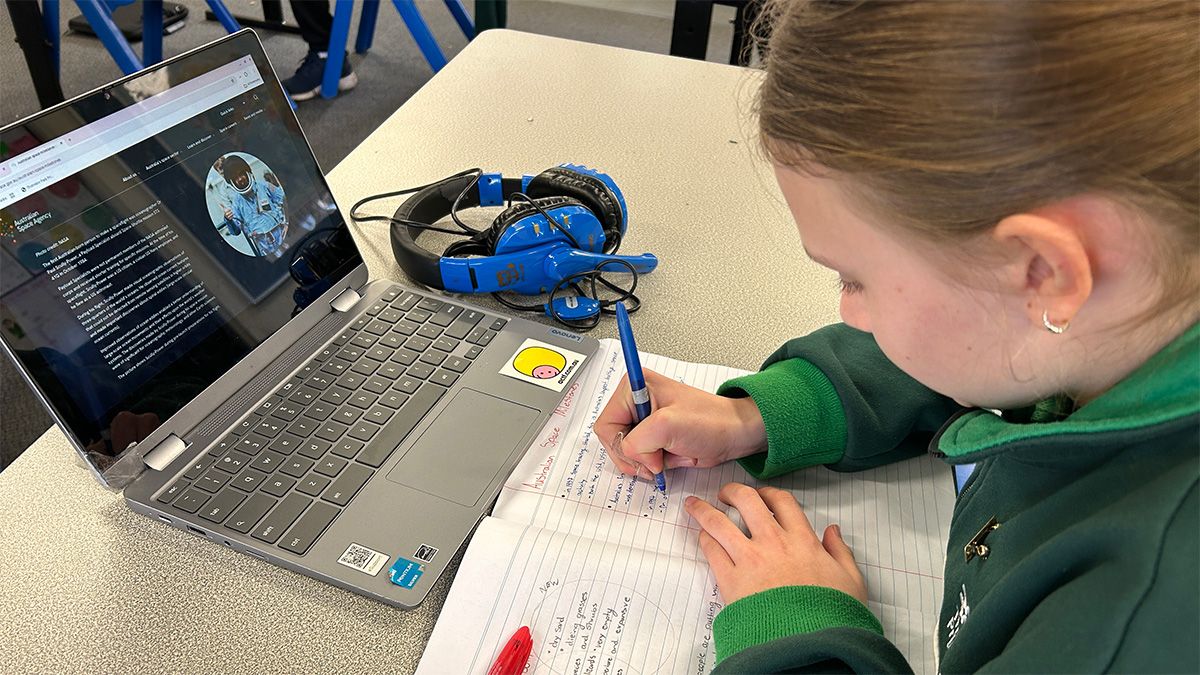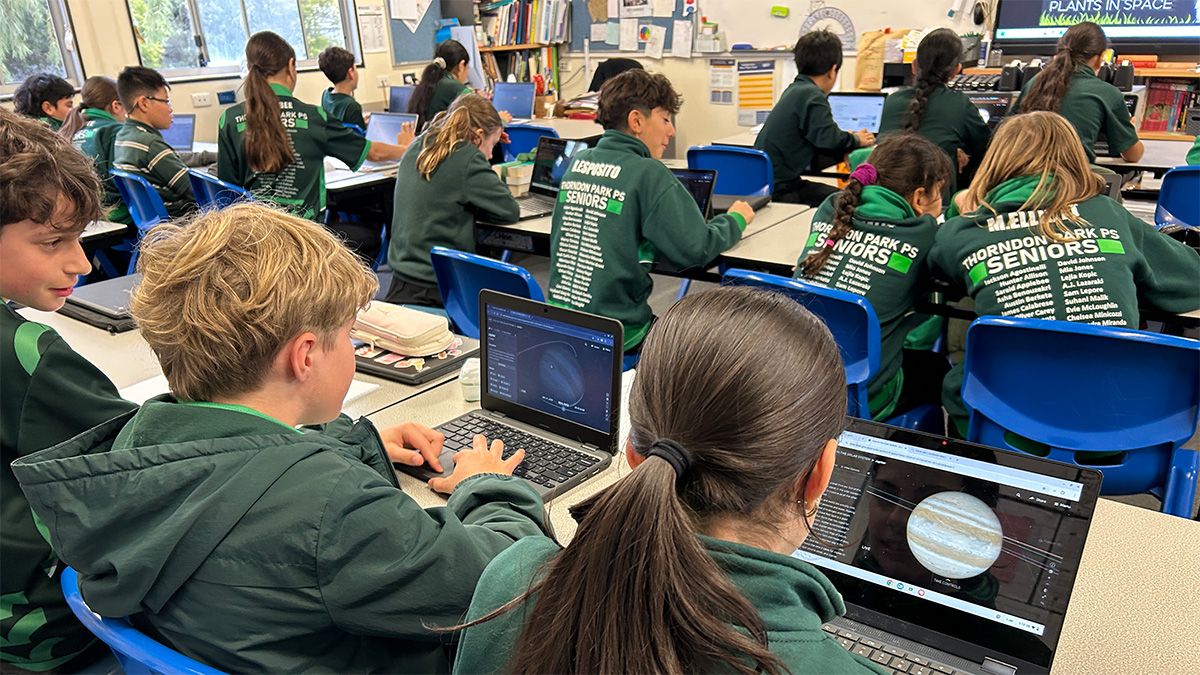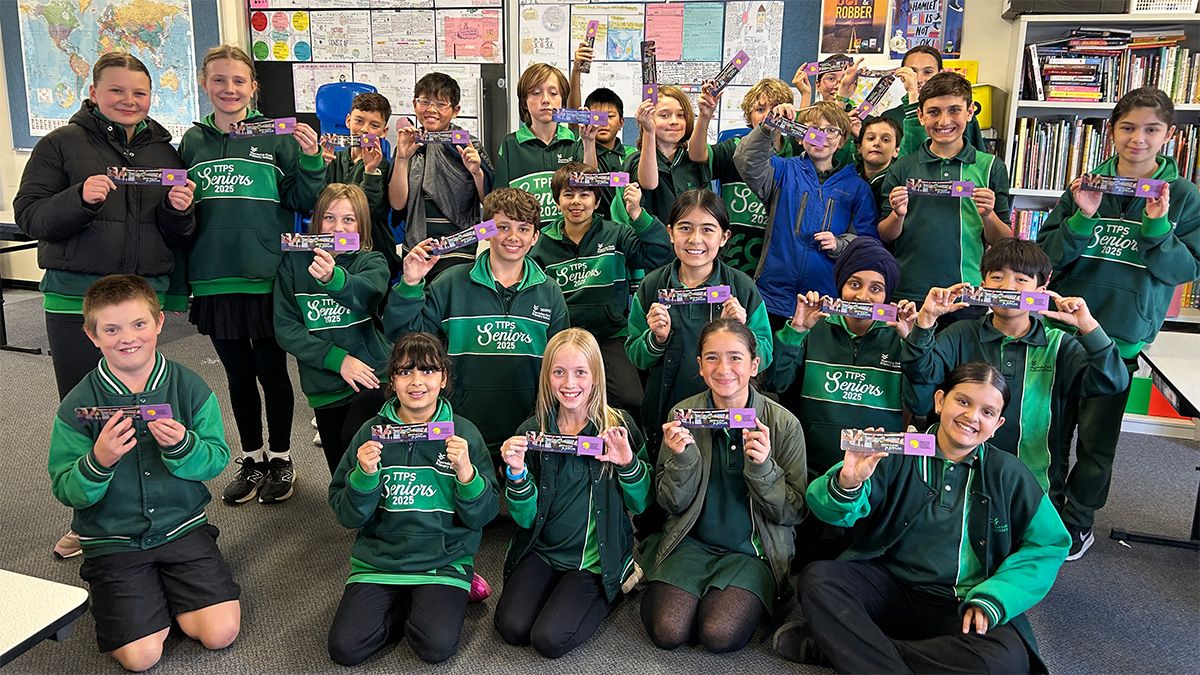Teaching with Space Nova Series 2

In March this year, I was invited by the Australian Children’s Television Foundation (ACTF) to attend the launch of Space Nova Series 2 at the Australian Space Discovery Centre in Adelaide. With my two school-aged children in tow, I was immediately impressed to meet Australian astronaut Katherine Bennell-Pegg, before enjoying an advanced screening of an episode from the new series. I’m not sure who was more excited - my kids or me!
Following the screening, I was invited to explore the Space Nova Series 2 educational resources, and I’m pleased to share my reflections in the following article.
When our Year 5/6 class began exploring Space Nova Series 2, I was looking for a resource that would do more than tick boxes. I wanted something that could engage students, deepen their understanding of key concepts and connect meaningfully across subjects. Developed by the Australian Children’s Television Foundation (ACTF), the Space Nova Series 2 multimedia resource delivered on all fronts.
I incorporated it into our Science and English programs, threading it through our transdisciplinary Unit of Inquiry, “Changing conditions affect adaptations.” This resource proved to be more than just a fun sci-fi series: it became a catalyst for critical thinking, collaborative learning, creative design and cross-curricular connections.
Why I Chose the Space Nova Series 2 Resource
There were several reasons this resource stood out:
- Cross-curricular alignment: It seamlessly supported our work across Science, English and HASS, while reinforcing our school values of Critical Thinking and Collaboration.
- Curriculum outcomes and connections:
- Science: Students explored how living things adapt to changing environmental conditions.
- English: The episodes prompted rich discussions, comprehension work and textual analysis.
- Technologies: Learners applied their understanding of sustainability and innovation through design-thinking activites.
- High engagement: The digital format and futuristic storytelling captured students' attention from the first episode. That initial excitement paved the way for deeper inquiry and meaningful conversations.
- Creative and collaborative opportunities: The resource inspired students to work together and think independently by designing new tech, imagining future worlds and reflecting on the choices made by the characters.
How we used the Space Nova Series 2 Resource in the classroom
We kicked things off with Lesson 1: Fact vs Fiction with Australian astronaut Katherine Bennell-Pegg from the Space Nova Series 2 teaching resource. To bring the experience into our regular classroom learning environment, I uploaded the interviews with Australian astronaut Katherine Bennell-Pegg and accompanying discussion questions from the resource to ClickView, which we use frequently in our school, and I transformed it into an interactive video for the students. The resource offers a useful level of flexibility that can suit different teaching contexts.
Using ClickView to create interactive videos.
Using the guided comprehension questions from the resource, students not only demonstrated their understanding but also reflected on their personal perspectives:
· “What aspects of Katherine’s career do you find most inspiring?”
· “How does real astronaut training compare to what we see in Space Nova?”
These questions sparked lively discussion and reinforced our school’s focus on Critical Thinking. Students drew thoughtful comparisons between fiction and reality, engaging with the idea of imaginative narratives and space exploration on a whole new level.
A snapshot of Katherine's interview, highlighting strong student engagement. Using ClickView also allows teachers to monitor how students interacted with the video.
ClickView's analytics provided insight into student comprehension and highlighted growth points for both teaching and learning.
Task 5 of Lesson 1 of the resource challenged students to investigate the history of space exploration. Working in pairs, they created timelines that mapped out milestones from the Moon landing to the rise of modern space agencies. This became a natural entry point into HASS, as students explored how scientific advancement intersects with human history.

Evie, a Year 6 student, taking notes on the history of Australian space exploration.
Just as importantly, the activity encouraged collaboration. Whether building timelines or discussing key historical moments, students worked together to make meaningful connections between real-world history and science and the imagined future of Space Nova.

We enjoyed watching the interview as a class. Having the clip available on ClickView was especially beneficial, allowing students to rewatch, pause and use subtitles. This was particularly helpful for our EALD learners.
Transdisciplinary Connections
Space Nova fit seamlessly into our Unit of Inquiry, which focused on the Big Idea: “Changing conditions affect adaptations.” One of the most engaging Lines of Inquiry was the “diversity of environments”. Students analysed the unique planetary settings featured in the series, identifying characteristics such as:
· Terrain
· Rainfall
· Flora and fauna
· Comparisons to Earth’s biomes
This sparked rich discussion and scientific curiosity as students considered how life might adapt to extreme and unfamiliar environments.
We then moved into Lesson 2: Alien Design and Storytelling of the resource, where students were challenged to design an alien species capable of surviving on one of Space Nova’s fictional planets. To support their ideas, students used NASA’s interactive tool, Eyes on the Solar System, to explore data on climate, gravity and atmosphere. This task perfectly blended scientific research with imaginative thinking.

Students Oliver and Melany exploring NASA's Eyes on the Solar System. A great interactive site.
Through this activity, students demonstrated:
· Scientific application: understanding how organisms adapt to different environmental conditions
· Artistic expression: through creative alien designs
· Written communication: by explaining and justifying their design choices
· Digital literacy: using online resources like NASA’s exoplanet catalogue to inform their thinking
This hands-on task brought science and storytelling together, offering a powerful example of how media-rich resources like Space Nova can unlock creativity and deepen learning across subject areas.
Evidence of Student Learning
Throughout the unit, both formative and summative assessments highlighted how the Space Nova Series 2 resource helped students deepen their understanding of science concepts while developing critical thinking and communication skills.
Formative assessment was built into our early lessons. The comprehension questions embedded in the Katherine Bennell-Pegg interview provided immediate feedback and sparked thoughtful conversations. Group reflections revealed a growing sophistication in how students distinguished between science fiction and real-world science. As one student asked during a class discussion, “Could humans really adapt to that planet?” a question that reflected genuine curiosity and inquiry.
As we progressed, students demonstrated increasing confidence in evaluating scientific plausibility and drawing connections to their own learning. One Year 5 student reflected, “I liked how it made me think about what’s real in space shows.”
The unit concluded with summative assessment: a design project in which students created a unique alien species and wrote a scientific rationale to explain how it could survive in a specific planetary environment. This brought together everything we had explored in our Science unit of inquiry. From environmental conditions and biological adaptations to creative problem-solving and storytelling.
Student feedback was overwhelmingly positive. A Year 6 student commented, “It was fun but also made me realise astronauts need more teamwork than I thought.” Many students appreciated the way the series combined entertainment with real-world learning and several even expressed new interest in careers in science, design or space exploration.
Final Thoughts
The Space Nova Series 2 resource a rich and versatile teaching tool that goes well beyond engaging students in just one subject area. It supports STEAM learning, media literacy, and critical thinking, all while offering flexibility across English, Science, Geography and HASS.
I would highly recommend this resource to any educator looking to:
· Explore space science through compelling storytelling
· Create meaningful cross-curricular links
· Foster curiosity, creativity, and collaboration, key elements of the 6 Global Competencies
For our students, it wasn’t just about watching a show. It was about asking questions, exploring possibilities, and understanding the balance between imagination and reality. And that is the mark of a great teaching resource.

Our Year 5/6 class at Thorndon Park Primary School thoroughly enjoyed using the Space Nova Series 2 Resources to deepen our understanding of space exploration and engage with rich, curriculum-aligned learning activities featuring Australian content.